Categories
- animatronics (12)
- apple (11)
- arduino (179)
- art (41)
- articles (121)
- artificial intelligence (11)
- automation (421)
- avr (205)
- bitcoin (3)
- breadboard (9)
- cameras (57)
- cars (26)
- cell phones (28)
- clothing mods (21)
- console mods (26)
- dangerous (94)
- desktop mods (24)
- embedded (5)
- flying things (54)
- fpga (22)
- gaming creations (108)
- interface (225)
- internet (17)
- laptop mods (6)
- lasers (22)
- linux (7)
- magnetic (3)
- medical (12)
- microcontrollers (51)
- misc projects (152)
- msp (12)
- music (124)
- pic (90)
- projects (23)
- pyroedu (76)
- raspberry pi (26)
- robots (312)
- security (36)
- sensors (307)
- software (200)
- solar (19)
- stamp (9)
- tools (149)
- tutorials (98)
- Uncategorized (45)
- usb (44)
- wireless (256)
Sponsors

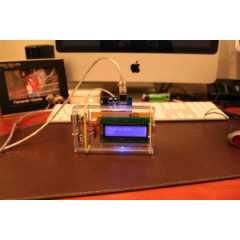
Posted May 12, 2013 by Chris
“The goal of this experiment is to convert the Arduino board into an USB keyboard plus a VGA sniffer to crack the password of a standard BIOS using the brute force attack method. There are no advantages in using this method, in fact this can be very slow and you may never find the password at all, but as always we do it for fun.”
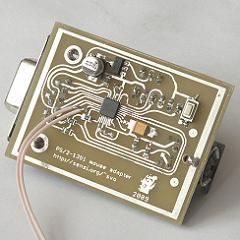
Posted October 21, 2012 by Chris
“A pixel artist friend of mine wanted a mouse to try his skills on a real C64. I thought I could help him by making an adapter that would allow a regular PS/2 mouse to be used with a Commodore 64. The most popular and supported C64 mouse is 1351 mouse which uses analog capabilities of joystick control ports to send movement data.”
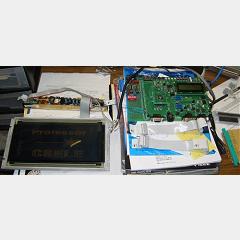
Posted November 15, 2011 by Chris
“Raster-scan displays, like a TV, require a number of synchronization signals to operate. The display is addressed as multiple, consecutive, horizontal lines, which scan from left to right, displaying a large number of pixels on the line as it advances. At the end of a line, the display begins to scan the next line from left to right until the entire frame (consisting of many lines) is displayed.”

Posted August 10, 2011 by Chris
It might seem like overkill and it is, but here’s a t-shirt that lets you know how many new e-mails you have waiting in your inbox. The system is designed using the Lilypad ‘clothing mod’ technology and some off the shelf wireless modules.
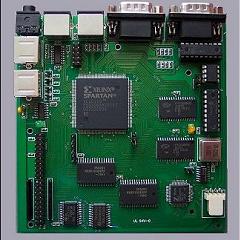
Posted September 8, 2010 by Chris
This is a cool little board designed with a Xilinx Spartan FPGA at its heart. It’s meant to be a single board computer and I thought everyone would get a kick out of it. The specifications are enough to do some impressive stuff and there’s even an archive of great documentation if you wanted to build your own!

Posted September 30, 2009 by Chris
The PICAxe serial keyboard was built to interface with a XENIX computer. It is fairly custom when compared to the way keyboards work now-a-days. However, I felt the project was noteworthy enough to take a look at. Hardware schematics & software are available for download.

Posted May 20, 2009 by Chris
This one is for anyone bored enough to make serious mods to their desktop case. Adding a small 5” or 7” LCD to your case can look awesome for things like dispalying current time/temperature/mp3 playlist. This write-up shows you how to take a PSone screen, connect it to your desktop and mod it to your case.
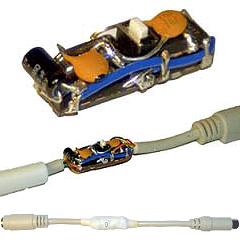
Posted November 15, 2008 by Chris
A hardware key logger will work on any computer regardless of the operating system. This is a project I’ve been wanting to do myself for some time. The project write-up includes microcontroller software & hardware schematics for the device.
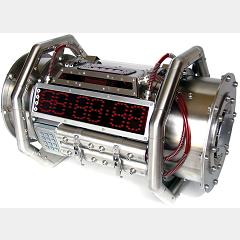
Posted July 21, 2008 by Chris
Although it doesn’t have anything directly to do with electronics, this case mod is just too unique to not take a look at. A case mod specialist had the bright idea of making a terrorist-looking WMD computer case. Read the write-up for a full description & more details.
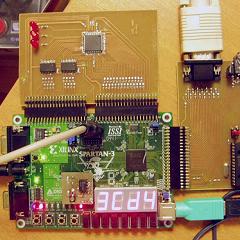
Posted July 3, 2008 by Chris
From the project write-up: “Minimig stands for Mini Amiga. Minimig is an FPGA-based re-implementation of the original Amiga 500 hardware.” It’s definitely worth a look for anyone interesting in how emulation of hardware & software on FPGA is done.






